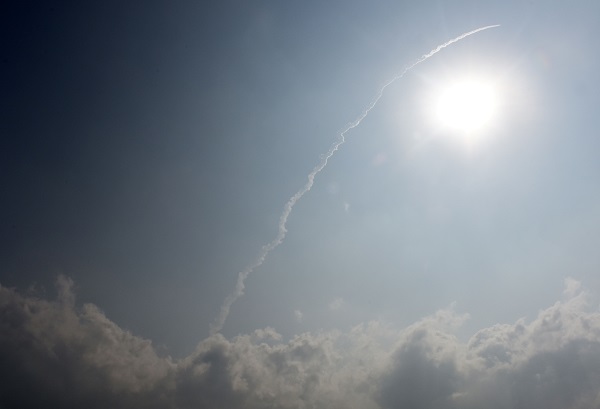- Saturday, July 27, 2024

By: indiaweekly.biz Staff
India’s latest communication satellite, GSAT-31 was successfully launched from the spaceport in French Guiana during the early hours on Wednesday (6).
The launch vehicle Ariane 5 VA-247 lifted off from Kourou launch base, French Guiana at 02.31 IST carrying India’s GSAT-31 and Saudi geostationary satellite 1/Hellas sat 4 satellites, as scheduled, said India’s department of space in a release.
After a 42 min flight, GSAT-31 separated from the Ariane 5 upper stage in an elliptical geosynchronous transfer orbit with a perigee (nearest point to Earth) of 250 km and an apogee (farthest point to Earth) of 35,850 km, inclined at an angle of 3.0 degree to the equator.
With a lift-off mass of 2536 kg, GSAT-31 will augment the Ku-band transponder capacity in geostationary orbit. The satellite will provide continuity to operational services on some of the in-orbit satellites. GSAT-31 derives its heritage from ISRO’s earlier INSAT/GSAT satellite series.
“GSAT-31 has a unique configuration of providing flexible frequency segments and flexible coverage. The satellite will provide communication services to Indian mainland and islands” ISRO Chairman Dr K Sivan said.
Dr. Sivan also added that “GSAT-31 will provide DTH Television Services, connectivity to VSATs for ATM, stock-exchange, Digital Satellite News Gathering (DSNG) and e-governance applications. The satellite will also be used for bulk data transfer for a host of emerging telecommunication applications.”
After separation from Ariane-5 upper stage, the two solar arrays of GSAT-31 were automatically deployed in quick succession and ISRO’s master control facility at Hassan in Karnataka of Southern India took over the command and control of GSAT-31 and found its health parameters normal.
In the days ahead, scientists will undertake phase-wise orbit-raising manoeuvres to place the satellite in geostationary orbit (36,000 km above the equator) using its on-board propulsion system.
During the final stages of its orbit raising operations, the antenna reflector of GSAT-31 will be deployed. Following this, the satellite will be put in its final orbital configuration. The satellite will be operational after the successful completion of all in-orbit tests.